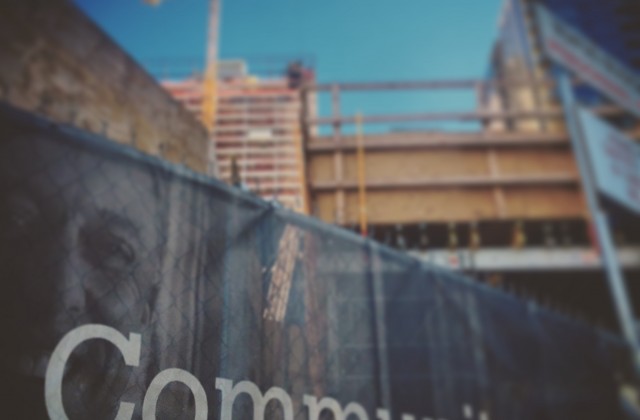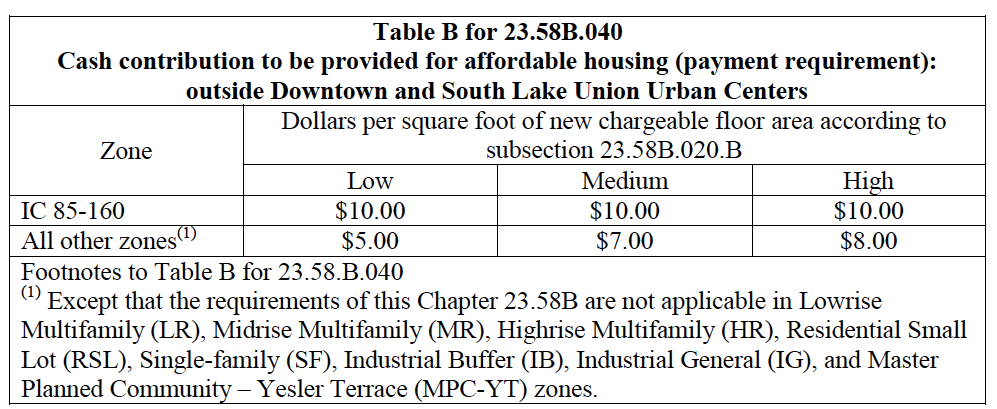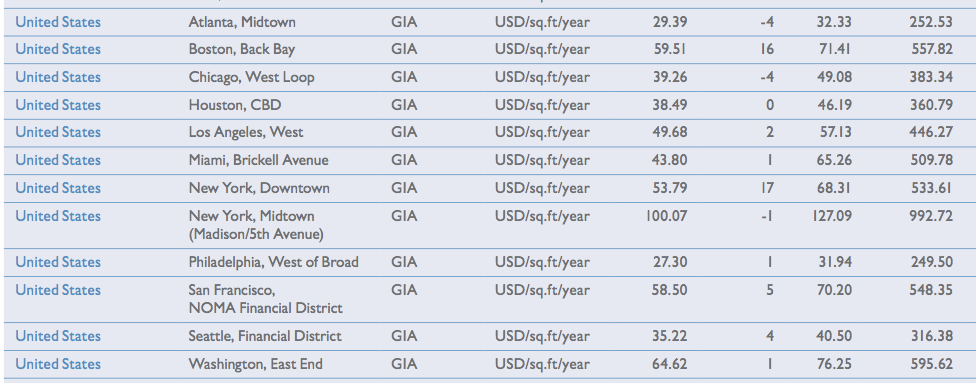Commercial Linkage: Math that Makes You Go “Hmmmm.”
For years we’ve been saying that the best thing to do if we want housing prices to stabilize or even go down is to build lots more housing, including subsidized housing. The basic economic principle is that price—whether it is for an apple at the local grocery store or Napoleon’s hat—is a quantitative measure of costs of production, supply, and demand. When there is scarcity of a product the best thing to do is allow more production. If we believe that people with out enough money to buy the product should get it also, then we give them or the producers subsidies to provide poorer people the ability to have the product.
Notwithstanding the fact that for ideological reasons many, many people reject this basic idea and it’s important corollary: adding costs to production of any product, and housing in particular, makes prices higher by disincentivizing production which suppresses supply and adds costs that inevitably get passed on to buyers. There are good costs placed on products that, while they do increase price, are thoughtful and reasoned in a broader context. Taxes on energy consumption in the form of a gas tax, for example, tends to put downward pressures on demand; that’s a good thing when it comes to consumption of something that harms the environment even when it might have an adverse impact on poor people.
But when policy makers ignore or forget these simple rules and they propose adding costs to the production of good things, like housing, in order to pay for other good things like, well, housing, the effects are notable because they do exactly the opposite of what policy makers want: prices go up. As I pointed out last week, we’ve been running the numbers on the so called Grand Bargain and finding that, in the residential context anyway, the added costs of construction and loss of rent revenue that comes with mandatory inclusionary zoning does not work; the additional construction costs and lost rent revenue exceed the added value of more square footage.
What about in the purely commercial context? Well, a very quick look at the already passed fee structure (the full City Council passed a fee regime for a commercial linkage tax on November 9th as part of the Bargain) seems to be an indicator that the math on that proposal is troubling as well. Here’s the fee table for commercial fees outside downtown and South Lake Union.
And here’s a very rough coffee shop napkin look at the math of what the mandated 1 additional unit of Floor Area Ratio costs a commercial project outside downtown and South Lake Union under this regime:
Assumptions
60,000 Square Foot Site
FAR 9
540,000 Square Foot Building
“Bonus” FAR of 1 means an FAR of 10
600,000 Square Foot Building (an additional 60,000 Square Feet)
$10 fee/tax per Square Foot for all Square Feet = $6,000,000 fee/tax
“Bargain” Price for Square Footage = $100 per Square Foot
Is that a lot to pay for a square foot of commercial space? I have no idea. But through the magic of Google I found a Cushman Wakefield study of rents for office around the world I found this table.
Again, I am not a real estate guy, but rents in midtown Manhattan are $127 per square foot. That’s obviously not construction costs, so maybe that’s not fair. But still, if we’re looking at the exchange of value here it’s kind of weird to think of a developer paying that price, $100 per square foot, for 60,000 additional of additional square footage. I don’t think anyone would pay that kind of rent for those square feet outside of downtown Seattle.
How about in a smaller building?
Assumptions
60,000 Square Foot Site
FAR 4
240,000 Square Foot Building
“Bonus” FAR of 1 means an FAR of 5
30,000 Square Foot Building (an additional 6,000 Square Feet)
$10 fee/tax per Square Foot for all Square Feet = $600,000 fee/tax
“Bargain” Price for Square Footage = $50 per Square Foot
Hmmm. So smaller buildings pay less for the additional square footage. In zones with less capacity, the additional square footage costs less per square foot using these assumptions. Why? Is this intentional? In areas where incrementally there is more dense office and commercial space do we want a greater penalty for the construction and less elsewhere? Why?
Again, I know very little about commercial real estate and judging by the names on the resolution passed by the Council, Ketil Freman, Brendon Staley, and Laura Hewitt-Walker, neither do the City staff that put this together. These people are smart experienced people, but I don’t think they have a commercial real estate background. That certainly doesn’t disqualify them from this work, but it begs the question where did these numbers come from? Will they work for commercial developers?
According to an article in the Daily Journal of Commerce about South Lake Union real estate prices an actual expert, Dylan Simon of Colliers, pegged the land prices in South Lake Union pretty high.
Currently, buyers can expect to see pricing in the $350 to $500 per square foot range, with a heavy dependency on zoning, which changed markedly with the City Council’s approval of the South Lake Union rezone in May 2013.
Again, Simon is talking land cost not rents in South Lake Union. But remember, the $10 per square foot number (isn’t interesting how all the City’s numbers are so neat and round) applies outside South Lake Union. Would developers really pay $100 a square foot in fees for an additional measure of FAR in say, Northgate? Ballard? Could the rents they charge in those neighborhoods offset the cost of the fees?
This is pretty much the way the Grand Bargain is playing out: great politics and really, really weird math. When we consider the value proposition the question is will the additional square footage offset the $100 or $50 fee with increased overall rent revenue? Hard to say. But the larger question, though, looms: when will policy makers wake up to the basic principle that when you remove incentives and add costs, you get less production and higher prices?
In the case of the commercial component of the Grand Bargain, does this mean projects subjected to these taxes will fail to get financing meaning nothing gets built? If nothing gets built that means no tax on any square footage gets collected and no funds are added to the City’s affordable housing piggy bank. That purs even more pressure on other projects to build more housing to meet the Mayor’s goals. Does that help solve the housing crisis? Will the City and Grand Bargainers fix these problems? Or will they apply the basic math and economics we know are right, build more of a scarce thing if you want prices to stabilize or go down?




